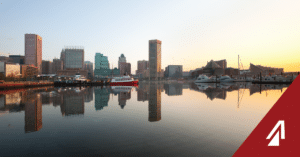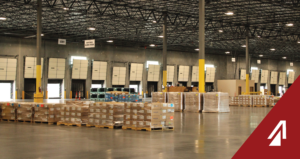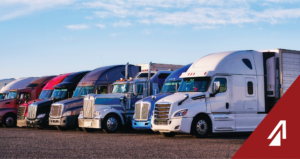Private trucking companies are working hard to make sure their practices and vehicles are more sustainable and environmentally responsible, but they could use some help. According to the American Transportation Research Institute (ATRI), there are many measures federal, state, and local governments can pursue to help make the logistics industry more sustainable. These public sector entities have a unique ability to make a pronounced impact on logistics sustainability.
Enforcing the Law and Power of the Purse
Some of government’s fundamental purposes are to create and enforce laws – in the US, Congress creates the laws and the executive branch enforces them. The majority of the nation’s sustainability standards and regulations are enforced by the EPA, National Highway Traffic Safety Administration, as well as state and local groups. Private companies, working alongside these organizations, often require incentives to help research, develop, and innovate new technologies that help trucks become more sustainable. The public sector is able to help in these areas in several ways.
Set Emission Standards – Public agencies, like the EPA and NHTSA, are responsible for setting the federal limits on acceptable greenhouse gas emissions and fuel economy. These groups perform studies that gauge private companies’ sustainability practices, or lack thereof, and create regulations to give the industry uniformity. Many of these standards are developing strong results. ATRI states that due to EPA standards, model year 2017 truck engines will produce up to twenty percent less greenhouse gas emissions than their 2010 counterparts, and should reduce the emissions even more by 2027. These reductions are due to more efficiently designed engines. At this time, these agencies cannot force companies to purchase the new, efficient vehicles, but can help incentivize companies to buy them by providing financial aid or tax incentives.
Set Trucking Limitations – The trucking industry has several areas where limitations are set in place: truck size and weight, idling, or speed limits. The majority of these limitations are placed on trucking companies or drivers by state or local authorities.
• Size and weight – currently many municipalities restrict trucks to smaller or lighter vehicles; often related to concerns about the failing infrastructure . However, if these areas wish to operate more sustainably, they would allow more companies to use what ATRI calls, “higher productivity vehicles.” These are the larger trucks that would allow shippers to send more freight at once, use less fuel, and create greater efficiency.
• Idling – States, like California, impose strict idling policies on drivers, often demanding trucks drive on the road within minutes of starting their vehicles. One of the main concerns of idling is the engine burning fuel needlessly. The ATRI says that idling trucks can consume as much as .64 to 1.15 gallons of fuel, per hour, while idling. Currently, there are several idle reduction technologies available for private companies to utilize, but these are often costly. Public sector agencies could help incentivize their purchase with financing options like grants or tax credits.
• Speed – Speed is regulated by each level of the government depending on which road drivers use. Public sectors can improve the trucking industry’s sustainability by regulating speed according to fuel consumption. Studies have shown that there is a correlation between speed and fuel consumption; the faster the speed the more fuel used. So, to help trucking companies be more sustainable, the government should set speed limits with fuel savings in mind.
Partnership Programs – The EPA, and other government agencies, can promote trucking sustainability by funding more partnership programs like the EPA’s SmartWay Program. It is a voluntary public-private program that provides systems for companies to track their fuel consumption and emissions, helps companies find more sustainability-conscious carriers or transport modes, accelerates the use of fuel-saving technologies, and supports global energy security. These types of programs are helpful for companies to receive the resources they need to gauge their environmental footprint and create steps to improve it. Since its founding in 2004, SmartWay partners have been able to save as much as 196.5 million barrels of fuel – equating to approximately $27.8 billion.
Research and Testing
Public agencies often sponsor vital research and development for sustainable trucking innovations. They provide grants and tax incentives that companies need to create new technologies that help cut down carbon emissions, reduce fuel consumption, and create alternative fuels. Some programs, conducted by the U.S. Department of Energy or Department of Transportation, in conjunction with various state programs, generate billions of dollars in economic benefits as well as significant environmental savings.
One prominent idea that needs further funding for testing and research is the dedicated truck lane (DTL). Dedicated truck lanes are lanes on interstate highways and other roads specifically meant for CMV traffic. According to various studies, these lanes would improve safety and efficiency of both commercial and passenger vehicles, increase trucking efficiency, and reduce considerable congestion in major metropolitan areas. One of the most comprehensive studies for DTLs was undertaken by the states of Indiana, Ohio, Illinois, and Missouri studying the effects of widening I-70 to accommodate DTLs. Their research concluded that building DTLs could produce $36 billion economic benefit over 20 years and as many as 258,000 job years of employment until 2030. The study found that building DTLs would significantly improve sustainability objectives by reducing noise and carbon emissions. The states are considering the expansion but require funding to pursue the project entirely. This is where public agencies like the USDOT could assist.
Other public agencies can help provide government grants and incentives for research in different technologies or in alternative fuels like liquid natural gas.
Reduce Congestion Through Infrastructure Improvements
In a previous blog, The U.S. is Failing Its Infrastructure Test: and It is Costing Logistics Billions, it was discussed how the U.S. highway infrastructure is in need of serious repair. Numerous chokepoints and congested zones significantly delay CMVs and cause numerous hazards. Each costing the trucking industry money and causing environmental issues. This is a major area where the public sector can assist in logistics sustainability.
ATRI conducted a report, “Cost of Congestion to the Trucking Industry,” which found that trucks operate more efficiently in less traffic and that delays cost the industry billions per year. Delays cost trucking companies $63.4 billion in 2015 alone. Most of these losses were in fuel costs, but greater losses came from compromised “JIT” deliveries and line down situations. Other organizations, like the American Association of State Highway and Transportation Officials (AASHTO) claim that the U.S. has reached a “capacity crisis.” They claim the U.S. infrastructure has only grown ten percent as fast as the interstate traffic rate and that soon, the current infrastructure will not be able to handle the amount of drivers.
Adding or improving infrastructure would allow trucks to move more efficiently, cause less pollution, and use less fuel. Each of these would help improve the environment and make supply chains more sustainable. Government agencies often claim that it is too expensive to renovate and improve national roadways, but private organizations are willing to assist. ATA President Chris Spear recently addressed the U.S. Senate with a proposal to increase fuel taxes by $.20 per gallon and use that money to improve the infrastructure. The ATA estimates this would raise approximately $340 billion over the next decade for improvements and only cost motorists an additional $100 per year.
The public sector has numerous opportunities to help and support the trucking industry become more sustainable. They can help by unifying standards for regulations, offering companies incentives to innovate sustainable solutions, provide opportunities for research and development, and improve the nation’s infrastructure to let traffic flow more freely. Each of these methods are uniquely suited for the public sector to assist and can have a significant impact on logistics sustainability.



